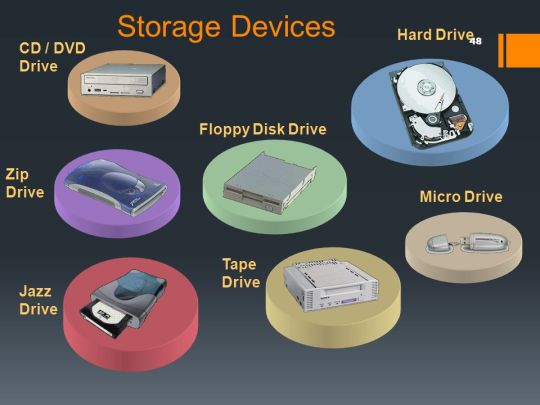#ConsumerDataStorageMarket
Explore tagged Tumblr posts
Text
Consumer Data Storage Devices Market Future Trends: Innovations, Demand Drivers, and Emerging Technologies Shaping Tomorrow’s Storage Solutions
The consumer data storage devices market is poised for remarkable transformation as technological advancements and changing user demands shape its future. With the explosion of digital content, multimedia files, and connected devices, consumers require more efficient, reliable, and high-capacity storage options. The market is evolving rapidly to meet these needs by adopting new technologies, improving device performance, and offering innovative form factors. This article explores the key future trends that are expected to influence the consumer data storage devices market in the coming years.

Increasing Demand for High-Capacity Storage
One of the dominant future trends in the consumer data storage devices market is the growing need for higher storage capacities. As digital content such as 4K/8K videos, high-resolution images, and large software applications continue to grow exponentially, consumers demand devices that can handle massive volumes of data.
Traditional hard disk drives (HDDs) continue to offer cost-effective large storage options, but solid-state drives (SSDs) are rapidly gaining ground due to their superior speed, durability, and energy efficiency. The future will see an increasing number of consumer devices equipped with multi-terabyte SSDs, offering faster data transfer and improved user experience.
Manufacturers are also investing in innovative storage architectures, such as 3D NAND flash technology, which stacks memory cells vertically to increase density and reduce costs. This advancement is crucial in enabling larger capacities within compact device sizes, meeting consumer preferences for portability without sacrificing storage space.
Speed and Performance Enhancements
Performance is a critical focus area for future consumer data storage devices. The rise in content creation, gaming, and multimedia consumption requires devices that can support fast read/write speeds and low latency.
NVMe (Non-Volatile Memory Express) technology is a major trend impacting the market. NVMe SSDs provide significantly faster data access compared to traditional SATA-based SSDs by leveraging PCIe interfaces. This results in quicker boot times, faster file transfers, and improved responsiveness, making NVMe the preferred choice for performance-conscious consumers.
Moreover, technologies such as PCIe Gen4 and Gen5 are pushing data transfer speeds even higher, enabling next-generation laptops, gaming consoles, and desktop PCs to achieve superior performance. As these interfaces become more mainstream, consumer expectations for instantaneous data access will rise, driving widespread adoption.
Portability and Form Factor Innovation
Consumer preferences are also shifting towards more portable and compact storage solutions. External hard drives and USB flash drives are increasingly designed to be smaller, lighter, and more durable, supporting on-the-go data access and backup.
The advent of USB Type-C and Thunderbolt 3/4 connectivity enhances portability by providing universal compatibility, high transfer speeds, and power delivery through a single cable. This simplifies device connectivity and improves user convenience.
Additionally, emerging form factors like M.2 and U.2 SSDs, which can be integrated internally within laptops and desktops, contribute to space-saving designs without compromising performance. Wearable and smart devices are also pushing the need for micro storage solutions embedded directly within compact gadgets.
Cloud Integration and Hybrid Storage Solutions
Although physical consumer storage devices remain essential, the future market trend clearly involves closer integration with cloud storage platforms. Consumers increasingly use cloud services for backup, synchronization, and remote data access.
Hybrid storage solutions that combine local device storage with cloud connectivity offer the best of both worlds: immediate access to frequently used files locally and scalable storage in the cloud for archives or less accessed data. These hybrid approaches improve data security, reduce dependency on physical devices, and enhance overall user experience.
Storage device manufacturers are collaborating with cloud providers to offer bundled solutions or seamless syncing capabilities, bridging the gap between physical and virtual storage. This trend is expected to continue growing, driven by expanding internet infrastructure and consumer comfort with cloud adoption.
Security and Data Privacy Enhancements
As data volumes increase, so do concerns over data security and privacy. Future consumer data storage devices will emphasize enhanced encryption, biometric authentication, and secure access protocols.
Hardware-based encryption embedded in SSDs and portable drives protects sensitive data against unauthorized access, even if devices are lost or stolen. Biometric security, such as fingerprint or facial recognition integrated with storage devices, provides an additional layer of protection tailored to individual users.
The market will also see growth in secure external storage devices designed specifically for privacy-conscious users, including journalists, professionals, and activists. This trend aligns with rising awareness and regulatory emphasis on data protection worldwide.
Sustainability and Energy Efficiency
Environmental sustainability is becoming a key consideration in the design and manufacture of consumer data storage devices. Future trends include the use of eco-friendly materials, energy-efficient components, and longer-lasting devices to reduce electronic waste.
Manufacturers are adopting energy-saving technologies in SSDs and HDDs, such as improved power management features that extend battery life in portable devices and reduce overall power consumption.
Consumers are increasingly favoring products with green certifications and sustainable lifecycle practices, influencing manufacturers to align with environmental standards.
Emerging Technologies and Innovation
Looking further ahead, emerging technologies like quantum storage, DNA data storage, and novel memory types such as MRAM (Magnetoresistive RAM) hold the potential to revolutionize the consumer data storage market.
While these technologies are currently in the research or early development phase, they promise unprecedented storage density, durability, and speed, opening new horizons for consumer applications in the next decade.
Conclusion
The consumer data storage devices market is evolving rapidly, driven by the insatiable demand for capacity, speed, portability, and security. Future trends indicate a clear movement toward high-capacity, high-performance SSDs leveraging technologies like 3D NAND and NVMe, alongside portable and hybrid cloud-connected solutions.
Security enhancements and sustainability considerations will increasingly influence product design and consumer preferences. Emerging innovations promise to redefine the boundaries of data storage in years to come.
For manufacturers, staying ahead of these trends through continuous innovation, strategic partnerships, and customer-centric solutions will be key to thriving in the dynamic consumer data storage market of the future.
0 notes